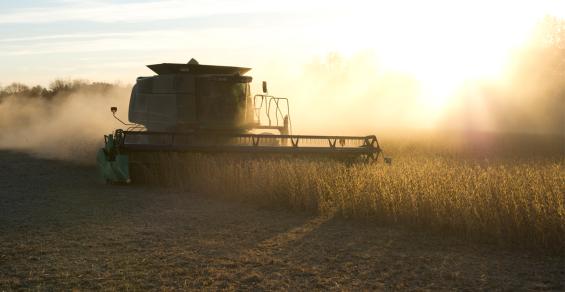Mindful management can help ensure a successful harvest and 2023 season.
Farmers in North and South Dakota might be nearing the middle of their fall harvest, but it’s never too early to plan for a successful next season.
Tom Schmit, an agronomist with Golden Harvest covering South Dakota, says producers can still ensure a successful harvest and start to the 2023 season at this point in the year. “From here on out, we can still be making adjustments if needed,” he says. “There’s a lot of places that need rain, but we can definitely manage what we can at this point.”
Manage for conditions
With growers facing a variety of conditions across the region, Schmit advises producers to manage for what they’re seeing in their fields. “It’s about protecting what they can and maximizing potential with where we’re at right now,” he says. “Of course, we need to make sure to get the most bushels we can this fall.”
Producers can work with their agronomists, conduct extra field scouting and pay close attention to the conditions happening within their fields to still secure that high-yielding crop this harvest.
Schmit says many of the corn and soybean fields he advises across South Dakota are seeing increases in insect pressure from grasshoppers and corn rootworm.
“We’re seeing the typical hot, dry insect — which are our grasshoppers — starting to move in and make an impact, so plan to manage that if they start reaching a threshold,” he says. “On the corn side, we seem to see more and more corn rootworm pressures every year. We need to keep an eye on that to maybe make a second treatment to cope with their population.”
While insect pressure is on the rise, diseases have been light due to dry conditions in South Dakota. “We haven’t reached the ‘disease triangle’ we need in a lot of areas with environments on the dry side,” he says. “While most diseases have been light, I have been seeing SDS [sudden death syndrome] in soybean fields moving in the northwest.”
Plan for 2023 success
What might be your best chance for success in the 2023 growing season? Think about what changes you might’ve made in 2022, Schmit says. “Thinking what am I going to plant in the crop rotation next year? What’s my weed spectrum look like? Where am I from an insect standpoint? What challenges did I face this year?”
Schmit says of what the planning process may look like. “You can plan accordingly through hybrid selection. It’s a safe bet that if there’s a disease causing some issues in a field, a different variety or fungicides and insecticides may be necessary to maximize it.”
With different fields potentially experiencing different pressures or challenges, Schmit says the key to success can depend on the situation. “We’re all creatures of habit, but a lot of times we can provide a solution to change something to improve the situation,” he says.
To find a local Golden Harvest seed adviser, visit goldenharvestseeds.com/seed-advisor.




